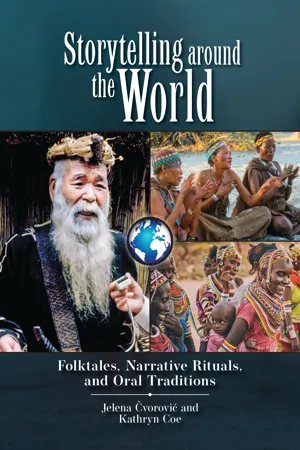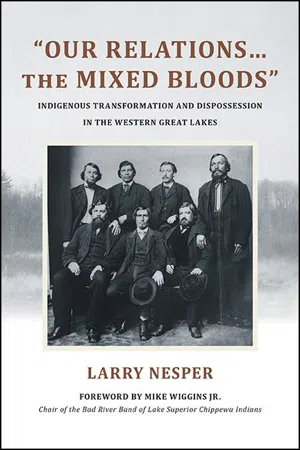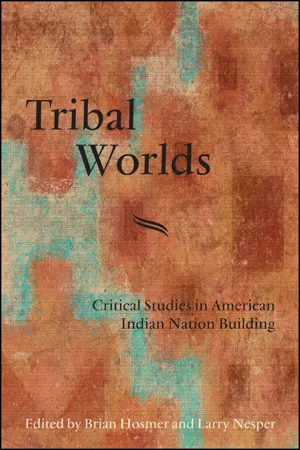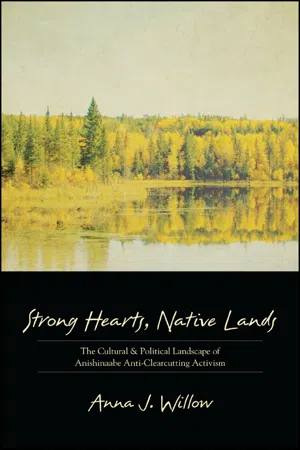History
Ojibwe
Ojibwe is a Native American tribe that originally inhabited the Great Lakes region of North America. They were known for their hunting, fishing, and gathering practices, as well as their use of birch bark canoes and wigwams. The Ojibwe were also known for their oral traditions and storytelling.
Written by Perlego with AI-assistance
Related key terms
5 Key excerpts on "Ojibwe"
- eBook - ePub
Storytelling around the World
Folktales, Narrative Rituals, and Oral Traditions
- Jelena Cvorovic, Kathryn Coe(Authors)
- 2022(Publication Date)
- ABC-CLIO(Publisher)
North AmericaANISHINAABE PEOPLE, Ojibwe, CHIPPEWA, AND SAULTEAUX OverviewThe Ojibwe, Chippewa, and Saulteaux people refer to themselves as the Anishinaabe or Anishinaabeg. They speak an Algonquin language. They are closely related to the Cree and Muskegon people and informally united with other Woodland tribes through common languages, customs, rituals, and religious beliefs. According to the 2010 Census, the population of the Anishinaabe was 170,742, making them the fifth-largest population of American Indians.According to Anishinaabe history, they came from the mouth of the Saint Lawrence River near Quebec. They moved south and eventually settled around the Great Lakes. They spread out from there, east to the Atlantic coast and west to North Dakota. The first historical mention of them is found in the Jesuit Relation of 1640, a report prepared by priests for their superiors in France. Friendship with French traders made it possible for them to get guns. They used those guns to protect and expand their territory, driving out the Fox and the Sioux.Originally, there were seven Anishinaabe clans, made up of those sharing common ancestry. The Anishinaabe were divided into bands, or small kinship groups of 50 or fewer people all related by blood or marriage. The bands maintained some independence, getting together through trade relationships, social gatherings, political decision-making, or ceremonies. They were patrilineal, with inheritance—including one’s clan membership—coming through the father’s line. Chiefs were elected through the clan elders and chosen based on their virtues. The Ojibwe people were basically nonhierarchical. There were few differences in rank except by age—older people were accorded more respect. Women and men both played important roles in decision-making.The Anishinaabe made canoes out of birch bark and used them for exploring, hunting, fishing, and protection. They lived in dome-shaped wigwams, homes that could quickly be constructed. Poles, arranged in a circle, were inserted into the ground. In the center of the circle a fire pit was built with rocks underneath. These rocks warmed the wigwams in winter. Then this frame was covered with the bark or woven cattail mats. It was roofed with birch bark. The structure was warmer than a tepee and a better design for the heavy snowfalls of the area. Storage houses and sweat lodges also were constructed. Sweat lodges were heated by the steam from hot rocks and used for healing and purification rituals. They also built medicine lodges, midewiwin - eBook - ePub
SUNY series, Tribal Worlds: Critical Studies in American Indian Nation Building
Indigenous Transformation and Dispossession in the Western Great Lakes
- Larry Nesper(Author)
- 2021(Publication Date)
- SUNY Press(Publisher)
19 There was also relative ease of movement between bands, often named after charismatic individuals, in that the kinship ideology that organizes social relations provides individuals with a resource that facilitates changing their allegiance and residence.People who came to see themselves as a single culturally similar group over the course of the eighteenth century, and calling themselves “Anishinaabe” but also “Ojibwe,” extended from Ontario to North Dakota. They would become one of the largest indigenous ethnicities in North America and have been well studied by scholars from both within and without those societies for many years. Scholars manage the extent and sociopolitical diversity of this ethnic group by dividing them into the northern, southeastern, and southwestern Ojibwe, this last being the division of interest here.Robert Ritzenthaler characterizes Ojibwe historic settlement pattern as “that of numerous, widely scattered, small, autonomous bands. Thus the term ‘tribe’ is applicable to the Chippewa-Ojibwas [these terms being versions of each other] in terms of a common language and culture, but it does not apply in the political sense that an overall authority was present.”20 Subsequently, indigenous ethnohistorian Theresa Schenck argued for the origin of the term and identity “Ojibwa” in “Ajijack,” the name for the Crane Clan, which would spread east and west from the fishing grounds at Sault Ste. Marie for its prestige value in the context of the fur trade.21The ethnonymic diffusion was catalyzed by the adoption of the Feast of the Dead and later the Midewiwin, or Medicine Lodge. Both of these ceremonial complexes effervesced with the fur trade. They actively reconstituted and reproduced boundaries and conceptions of communities, contra the materialist Harold Hickerson’s22 contention that these ceremonies are best understood as mainly expressive or reflective of sociopolitical change. This consolidation of an ethnic identity was also accelerated by the Iroquois destruction of Huronia in the 1640s creating a “shatter zone”23 throughout the Great Lakes region that caused Algonquian speaking peoples—several groups that would coalesce as the Ojibwe among them—to migrate west along both the northern and southern shore of Lake Superior,24 - eBook - ePub
Tribal Worlds
Critical Studies in American Indian Nation Building
- Brian Hosmer, Larry Nesper(Authors)
- 2013(Publication Date)
- SUNY Press(Publisher)
I have chosen to use “Anishinaabe” as it is the name used by the people themselves and adheres to contemporary scholarly practice. In addition, “Anishinaabe” connotes a broader group than some of these aforementioned terms are associated with. As I hope this article indicates, Anishinaabe conceptions of nationhood are complex and multifarious and involved extensive relationships across nations. Thus, while my focus is primarily on those people who refer to themselves as “Ojibwe” I use the more inclusive category of “Anishinaabe” to recognize the broader peoples discussed within this study. For a list of the various spellings and meanings associated with the Anishinaabe people, see E. S. Rogers, “Southeastern Ojibwa,” in Handbook of the North American Indians; Northeast, ed. Bruce G. Trigger (Washington: Smithsonian Institution, 1996); Robert E. Ritzenthaler, “Southwestern Chippewa,” in Handbook of the North American Indians; Northeast, ed. Bruce G. Trigger (Washington: Smithsonian Institution, 1996). 9. The English translation of jiibayag niimi'idiwag is “they are the northern lights.” See Nichols and Nyholm, A Concise Dictionary of Minnesota Ojibwe : 73. 10. See Frances Densmore and Smithsonian Institution. Bureau of American Ethnology., Chippewa customs, Reprint ed., Publications of the Minnesota Historical Society. (St. Paul: Minnesota Historical Society Press, 1979), 74. For information on the paths of souls, see Basil Johnston, Ojibway Heritage (Lincoln: University of Nebraska Press, 1976), 103–8. 11. While there is no etymological connection between ishkode and the morpheme – ode ' within the linguistic method, folk etymologies (the stories told by speakers based on perceived resemblances and connections) have made this connection. 12. “Home” is used here to mean the land of the deceased. 13. For further discussion of the importance of tobacco and offerings, see A. Irving Hallowell, Culture and Experience, ed - eBook - ePub
The Right to Home
Exploring How Space, Culture, and Identity Intersect with Disparities
- Tasoulla Hadjiyanni(Author)
- 2019(Publication Date)
- Palgrave Macmillan(Publisher)
© The Author(s) 2019 T. Hadjiyanni The Right to Home https://doi.org/10.1057/978-1-137-59957-5_6Begin Abstract6. Ojibwe Stories: “When the traditions are lost, it is like a person who has no identity”
End AbstractTasoulla Hadjiyanni1(1) University of Minnesota, Minneapolis, MN, USAWith six tribal bands, the Ojibwe, also called Chippewa or Anishinaabe, are Minnesota’s largest indigenous group (U.S. Census Bureau, 2000 ). The Mille Lacs Band of Ojibwe has about 4300 enrolled members, many of whom reside on the Mille Lacs Reservation (located approximately 100 miles northwest of Minneapolis), while others live in the Twin Cities, and the remainder out-of-state (The Mille Lacs Band, 2017 ). Since the 1700s, the Ojibwe have endured forced displacement and relocation as well as ongoing assimilation pressures and discriminatory policies that resulted in their losing almost everything that has traditionally been associated with home , be that family , community, language, food, religion, control, as well as a physical setting (Warren, 1984 ). Native groups now hold the status of Nations and rely on treaty rights, including hunting, fishing, and gathering rights, along with spatiality to expand the ways by which they can reconstruct their Native identities and foster social, cultural, spiritual, and temporal continuity (Nesper, 2012 ; Pevar, 1992 ). It should be noted that tribal affiliation is determined on the basis of “blood count” and one’s ability to document tribal descendants (see, e.g., Jarvis, 2017 ).Forced Displacement and Ojibwe Cultural Foundations
Wigwams , the traditional Ojibwe dwelling, consisted of a circular frame structure constructed out of tree branches and covered with birch bark swaths. Providing shelter for multiple generations, wigwams enhanced relationships across ages, creating a solid base on which to build the five Ojibwe cultural anchors: relationship to the land , a collective identity, language , spirituality , and foodways. Each of the five anchors is connected to the others and cannot operate alone . As sites of daily interactions and merged efforts in the making and breaking of camps (Peers & Brown, 1999 ), wigwams hosted activities that helped transfer the Ojibwe language , values, and customs to the next generations, through acts like cooking, eating , craft making , and storytelling (Child, 1998 ; Densmore, 1979 ; Kegg, 1993 ). Traditional Ojibwe life relied on extended family networks to provide for children’s - eBook - ePub
Strong Hearts, Native Lands
The Cultural and Political Landscape of Anishinaabe Anti-Clearcutting Activism
- Anna J. Willow(Author)
- 2012(Publication Date)
- SUNY Press(Publisher)
Lund 1995 ). Several non-Natives I spoke to in Kenora echoed his position. When they cite the “fact” that Anishinaabe people arrived in the region around the same time as Europeans, these individuals deploy history in an attempt to validate continued non-Native control and extraction of the area's natural resources.Traditional Culture and Ways of Life
The northwestern Ontario Anishinaabeg are part of a larger cultural and linguistic tradition. Anishinaabemowin (the language spoken by Anishinaabe people) belongs to the Algonquian language family, which includes groups as diverse as the Cree (to the north), the Mi'kmaq (on the east coast), and the Blackfoot (of the high plains to the west). Among indigenous North Americans, the Anishinaabe were historically numerous and powerful. They remain today behind only the Cherokee and Navajo in terms of population. By early historic times, Anishinaabe people controlled a vast area of northeastern North America, straddling the region later divided by the United States–Canadian border.Traditional Anishinaabe social organization was based on an informal tribal structure, with bands of three to four hundred comprising the basic social unit (Jenness 1977 [1932] ). Individual families and groups retained a significant degree of autonomy and, as leaders in times of war or peace, chiefs governed based on influence and respect rather than institutionalized coercive force. Although politically independent, bands were closely socially integrated through marriage and the clan system. An exogamous and patrilineal clan system created kinship ties based on shared doodems (or totems).2 Clans were represented by familiar animals. Principal clans included crane, loon, fish, bear, marten, deer or moose, and bird (Warren 1984 [1885] ; Benton-Banai 1988 ), but the relative prominence of each varied regionally.Prior to European contact, the Anishinaabe lived a seminomadic lifestyle, moving according to seasonal patterns of resource availability. As a consequence of their frequent mobility, Anishinaabe material culture emphasized portability. Light yet durable and easy to locate throughout Anishinaabe territory, birchbark (wiigwaas) was used for baskets and other containers as well as for birchbark canoes (wiigwaasi-jiimaan
Index pages curate the most relevant extracts from our library of academic textbooks. They’ve been created using an in-house natural language model (NLM), each adding context and meaning to key research topics.




